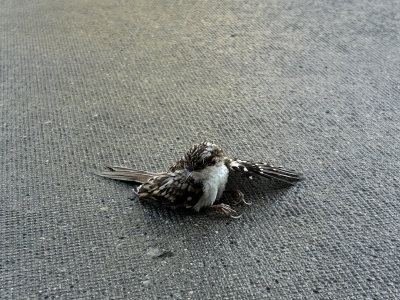
Eurasian treecreeper
An injured treecreeper, a small bird of the passerine order, was spotted near the University of Gdańsk's Rectorate. The University Guard handed the animal over to the Laboratory of Avian Ecophysiology UG, whose scientists helped it to recover. Helping injured birds is just one of the many activities of this unit. The head of the Laboratory, prof. dr hab. Włodzimierz Meissner, tells us what the UG ornithologists do:
'The Laboratory of Avian Ecophysiology is part of the Department of Vertebrate Ecology and Zoology at the University of Gdańsk. It consists of five scientists as well as doctoral students and undergraduates working here on their theses.
The research topics of the Laboratory are extensive and cover virtually all aspects of ornithology. We focus mainly on birds of aquatic and wetland habitats, and most of our projects concern bird migrations. We also address the ecology of wintering waterbirds, including birds residing in urbanised areas, their biometric variation, and basic faunal studies.
We are involved in research projects related to ecotoxicology, national monitoring of avian influenza, and bacterial drug resistance. In close cooperation with the KULING Waterbirds Research Group, we organise and scientifically supervise the work of the ringing point for plovers in the Vistula estuary and the monitoring of the numbers of waterbirds wintering in the Bay of Gdańsk. This is one of the longest-running bird surveys in Poland, going on continuously for over 40 years. Such a long period of observations allows us to observe the changes in ecology, distribution and morphology of birds related to the progressing climate warming. The results of our research translate into numerous publications in renowned scientific journals and are of practical importance in bird conservation planning.
By collecting data, we are also part of what is known as 'citizen science', where we work with amateur ornithologists to organise large-scale bird counts nationwide. More than 60 people participate in our research at the ringing point for plovers each year, helping us collect data while furthering their interests and learning methods of working with birds.’
